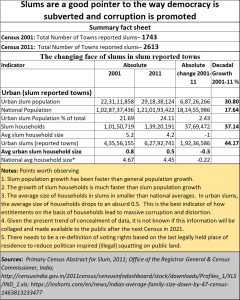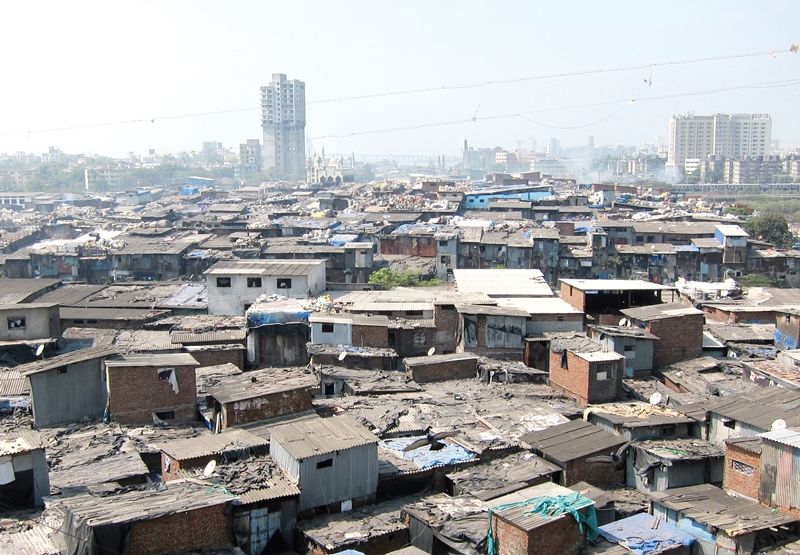https://www.moneycontrol.com/news/business/more-doles-for-the-needy-will-only-result-in-more-corruption-3838161.html
More doles result in more corruption; NYAY and Ayushman could be the biggest of all scams
RN Bhaskar — 18 April 2019
Doles, freebies and giveaways are wonderful electoral offerings (https://www.firstpost.com/business/splurging-money-on-mega-welfare-schemes-sans-planning-not-wise-govt-should-find-a-way-to-make-them-productive-6154241.html). The marginalized love them. Bleeding hearts welcome them. But the most ecstatic about these, in India, are politicians. One must also add to this list a retinue of players who skim off some of the money before passing it on to their political masters.
 Sounds outlandish, isn’t it? But not really. Remember the old statement by Rajiv Gandhi, former prime minister, about how only 15% of the actual amount reaches the poor? Well, he was right, except that now there is evidence that it could be significantly less than 15%.
Sounds outlandish, isn’t it? But not really. Remember the old statement by Rajiv Gandhi, former prime minister, about how only 15% of the actual amount reaches the poor? Well, he was right, except that now there is evidence that it could be significantly less than 15%.
To understand how diversion of funds takes place, you must remember that India has no standard or foolproof way of determining who is poor and what a household is. Thus, as long as doles, freebies and giveaways are linked to poverty and to households, money could actually go to categories that defy definition. QED – the perfect opportunity for scams.
Proof of this can be found in slums (https://www.moneycontrol.com/news/india/opinion-slum-creation-is-a-mammoth-scam-across-indian-cities-and-towns-2961321.html). The chart alongside provides a bird’s eye-view. All the data comes from the Census of India – which has also brought out a special document on slums (http://www.censusindia.gov.in/2011-Documents/Slum-26-09-13.pdf).
The following are the deductions:
- Slum population grew faster than national population. The conventional argument is that slum dwellers flock to the city looking for jobs. But that argument can be fallacious. Almost all migrants come to the city in search of jobs. This includes people who stay six to a room, pay rent, and thus stay legally. In sharp contrast are slumdwellers who are illegal squatters protected by powerful people. This leads one to the conclusion that slums are nothing but votebanks aimed at changing demographic profiles in a region (http://www.asiaconverge.com/2018/05/citizenship-votebank-northeast-and-work-permits/). It is akin to stuffing ballot boxes with bogus voting slips. Clearly, someone is promoting slums. Why else would slum population rise faster than national population?
- The number of households grew at an even faster pace. This again is counter-intuitive. Normally, one would have expected the household growth in slums to be the same as elsewhere. That is surprising.
- But the ‘Eureka!’ moment comes when one looks at the average slum household size which is as low at 0.5. That is a physical impossibility. But statistically, it means that same person belongs to two households. Thus, a father-mother in a dwelling become one household. The two children and their spouses become two additional families. Each woman can then claim that her spouse has deserted her and get another ration cards as independent households. The two siblings can call themselves another household. . . . and so on. What this means is that instead of a normal size of 4-5 members per household, slums have managed tweak this to a statistical 0.5. In other words, since all doles and subsidies are given to households, slums gobble up eight times the permissible doles, freebies and subsidies – at the cost of the tax paying population. This includes subsidised power, access to Ayushman Bharat, subidised gas cylinders, even free flats with the promise of no property tax payments in perpetuity (https://www.dnaindia.com/mumbai/report-property-tax-exemption-to-boost-market-for-small-houses-in-mumbai-2730192). No doubt, the additional doles garnered are shared with the protectors of slums. Enter the politicians, law makers and law enforcers as well.
- What is equally counter-intuitive is the declining growth rate of slum children. This is possibly because most slumdwellers opted to send their children back to their villages. They wanted children to grow in a better environment than in slums. When the children assume the age of 18, they will probably re-enter slums under the protection of some politician-backed slumlord, and join the ranks of rent-a-mob crowds.
- The government’s answer is that this diversion can be checked through Aadhaar. Unfortunately, there is now ample evidence that millions of bogus Aadhaar cards are in existence (http://www.moneycontrol.com/news/india/comment-how-aadhaar-and-npci-together-open-the-door-to-major-frauds-and-impersonations-2506669.html). The government deliberately ignored following the rigorous methodology advocated by the National Population Register (NPR). The Aadhaar matter is currently being heard by the Supreme Court. Anecdotal data of people having two Aadhaar cards – one for this city and one for the villages is now commonplace (http://www.moneycontrol.com/news/india/comment-aadhaar-does-not-identify-it-merely-authenticates-thats-an-important-difference-2502509.html). And strangely — because IT stalwarts like Nandan Nilekani and NR Narayana Murthy were once involved with the entire process – the Aadhaar Card got linked to the NPCI (National Payments Corporation of India) in an extremely dubious manner. The government only gives out Aadhaar numbers to NPCI for direct benefit transfer (DBT). NPCI maintains logs of Aadhar numbers and their corresponding bank accounts, and the amounts are thus transferred to the bank accounts. NPCI does not keep records, or logs, of the transactions. And it “overwrites” the bank account number with a new bank account number if the recipient opens a new bank account in another bank. This offers the unscrupulous a perfect recipe for a scam. A fraudulent Aadhaar holder can open a new bank account each year to avail of benefits under the DBT scheme. Since neither the government nor the NPCI keeps a record of bank account numbers against Aadhaar card holders, the scam can continue year after year.
The government is thus unable to fix the identity of deserving people convincingly in a foolproof manner. It cannot conclusively decide who is poor or the genuineness of the household. Thus there can be no guarantee that that doles, freebies and benefits actually reach the targeted audience despite the Aadhaar and DBT schemes.
What about ration cards? Hah! This author knows of the head of a reputed firm whose agent got him an economically weaker section (EWS) ration card instead of the normal one. When asked why, the agent replied, that it was easier to get an EWS ration card. When the person suggested that the EWS card be cancelled, the agent replied that the process was cumbersome, and would involve questions from the police on how the card got issued. The person then locked up the EWS ration card. He does not dare use it. He has been warned about the consequences of cancelling it. And on paper, his name would figure in the state’s EWS numbers.
Unfortunately, the government is itself a slumlord of sorts (http://www.asiaconverge.com/2015/11/is-the-government-acting-as-your-slumlord/). The government decides to protect slums. It begs the courts to regularize slums. It decides that dwellers in regularized slums will get free flats per household. And it then lobbies for non-application of property-tax in perpetuity.
So when Rahul Gandhi announces the NYAY (Nyuntam Aay Yojana) — which will cost the exchequer Rs.3.6 lakh crore annually (Rs.72,000 for 5 crore households) — or prime minister Modi heralds the Ayushman Bharat (https://www.moneycontrol.com/news/business/opinion-ayushman-bharat-is-a-great-concept-but-where-are-the-doctors-2851461.html) — which hopes to cover at least 10 crore households with a cover of Rs. 5 lakh per household thus involving a cover Rs.50 trillion, or Rs. 50 lakh crore — everyone is pleased. But going by the ratio of eight times the increase in the number of deserving households, it is possible that Rs.3 lakh crore will get diverted under NYAY and Rs.437 lakh crore will be skimmed off the Ayushman Bharat schemes.
No wonder that everyone – except tax payers – love doles.










































COMMENTS